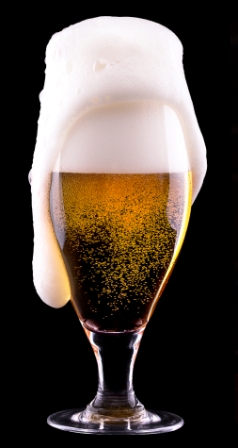

This article here does a really good job of breaking down some of the basics. I honestly really only use calcium chloride, gypsum, and 88% lactic acid. The most common minerals/additions used to adjust water are calcium chloride, calcium sulfate (gypsum), Epsom salt, chalk, baking soda, lactic acid, and phosphoric acid.
#BEERSMITH WATER PROFILE SOFTWARE#
You’ll still need software to determine salt/pH adjustments but it eliminates the tap water component. If all of this seems overwhelming to you, start by brewing with 100% RO or distilled water and trust that you’re basically brewing with a completely blank slate. I don’t live in a very large town, but from what I was told, there are three different sources. Two households in the same town could actually get their water from different facilities. The other kicker is some towns may source water from different locations depending on where you live geographically.

I was able to get SOME information from my town’s water report but it was missing certain necessary figures. All of this is public information so if it’s not posted online you can try to call your townhall and get the information you need. Just as an FYI, your town/city may already have a public water report you can access. Brewing software (Bru’n Water, Brewfather, and BeerSmith) will help you input your starting water profile and allow you to calculate additional salts as needed. The “bad” news is I’m stuck with a minimum of 86ppm chloride for all styles unless I dilute my tap water with RO or distilled water. This works in my favor since I usually target higher chloride and lower sulfate in my NEIPA water profile. My water is naturally higher in chloride and low in sulfate. The figures we really care about are highlighted in yellow. It’s very easy to add minerals to water and more difficult to remove minerals.Ībove is my water report I obtained from Ward Labs. This means their water is naturally low in mineral content, allowing them to freely adjust upward as needed without too many constraints. Lucky brewers have access to very soft water. Go to Ward Laboratories and get yourself a water report.

Why? because we need to understand how we can dial in our water profile/minerals to the desired level. If you’re serious about brewing NEIPAs, you need to understand the mineral makeup of your tap water. The good news is it’s really easy to take care of this step and one of the easiest variables to eliminate/troubleshoot right off the bat. Chloramines MUST be treated with Campden to remove. Chlorine can be removed from water by simply letting it sit out for 24 hours or by pre-boiling it. I would strongly encourage you to always treat your brewing water with Campden at an absolute minimum. If your water comes from a municipal source, it was likely treated with one or the other.

More delicate styles, such as NEIPAs are more susceptible to these types of off-favors. Chlorine and chloramine can produce chlorophenols in beer that contribute plastic-like or medicinal off-flavors. Treating for Chlorine/ChloraminesĬhlorine is a NEIPA killer. This includes tap water that doesn’t taste right, has a distinct taste, or is treated with chlorine/chloramines (city water). But we’re talking about water right? Yes, imperfections in water are going to have detrimental effects on your hazy IPA. A more malt-forward and bitter beer with crystal malt is going to do a better job at hiding imperfections. They step aside to let the yeast and hops SHINE. I can’t say any combo of flaked oats, white wheat and 2-row are going to create an explosive beer on their own. NEIPAs are very light-colored beers with pretty basic grain profiles. At least that’s what I’ve found from my own personal failed trials and experiments. In fact, the delicate aroma-forward nature of the style can be easily overshadowed or clash with things that aren’t supposed to be there. Yes, these beers are brewed with a crapload of hops but not in the same way a big malty bitter beer is. Hazy IPAs are very sensitive beers where off-flavors have NO PLACE TO HIDE. But why is this exactly? I think it comes down to a few things. While this logic may work with some styles, it doesn’t work for producing great NEIPAs. Good tasting water makes good beer, right? Not exactly. If you’re looking for a more in-depth overview of the style in general, check out this post. This post will touch on my personal experiences with NEIPA water treatment and everything I’ve researched up to this point. I’m still determining what exactly makes that true and what is 100% essential for the style. Many experienced brewers will tell you that water treatment is critical in producing the best hazy beers. Water chemistry is a very complex topic and something I am still learning and experimenting with myself.


 0 kommentar(er)
0 kommentar(er)
